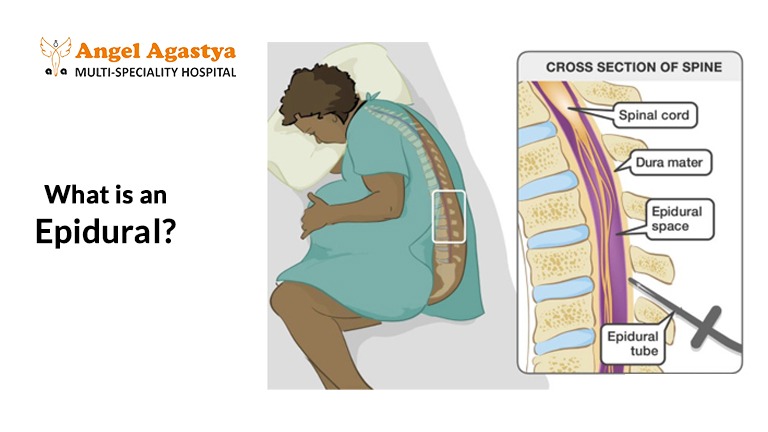Does Epidural or Painless Normal Delivery Have Side Effects? A Complete Guide for Expectant Mothers

Every expectant mother dreams of a smooth, pain-free childbirth, and epidurals promise just that. But are they truly the magical solution, or is there more to the story? While epidurals are widely used and generally safe, they come with potential side effects—some minor, some worth serious consideration. Before you make a decision, let’s dive into the facts, myths, and realities of Epidural Side Effects and what they mean for your childbirth experience.
Introduction: The Truth About Epidural Side Effects

Childbirth is a beautiful and transformative journey, but the pain of labor can be overwhelming. For many mothers, epidural anesthesia is a game-changer, providing effective pain relief and making labor more manageable. However, while epidurals are widely used and generally safe, it’s important to be aware of epidural side effects before making a decision.
Can an epidural cause complications? Will it affect your ability to push? Could it lead to long-term back pain or other lingering issues? Understanding epidural side effects is crucial for making an informed choice. Most side effects—like temporary numbness, shivering, or a slight drop in blood pressure—are mild and manageable. However, in rare cases, epidurals may lead to more serious complications, such as severe headaches or nerve damage.
Despite potential risks, epidurals remain one of the most effective pain relief methods during labor. They help manage contractions, reduce maternal stress, and allow women to rest, which can be beneficial for both mother and baby.
This guide explores epidural side effects, benefits, and risks, helping you weigh the pros and cons so you can confidently choose the best option for your birth experience. A well-informed mother is an empowered mother—knowing the facts about epidural anesthesia ensures that you step into labor feeling prepared and in control. Let’s explore the truth about epidural side effects together!
What is an Epidural?

An epidural is a widely used regional anesthesia technique that provides effective pain relief during labor. It involves inserting a thin catheter into the epidural space of the spine, through which pain-relieving medication is administered. This blocks pain signals from the lower body, allowing women to remain awake and participate in childbirth without experiencing intense labor pain. Epidurals can significantly improve the birthing experience, making it more manageable and less exhausting.
While epidurals are generally considered safe and effective, some women may have concerns about epidural side effects. Common short-term epidural side effects include temporary numbness, low blood pressure, shivering, or mild back soreness. In rare cases, more serious complications like severe headaches or nerve damage may occur. Some women also wonder about long-term epidural side effects, such as chronic back pain, though research has not conclusively linked epidurals to persistent discomfort.
Understanding epidural side effects, benefits, and risks is essential for making an informed birth plan.
Common Short-Term Epidural Side Effects

While epidurals are an effective method for pain relief during labor, they can come with certain side effects. Understanding these epidural side effects helps expectant mothers make informed decisions.
1. Back Pain
Many women report back pain after childbirth, but research suggests it is not necessarily caused by an epidural. Instead, labor positioning and muscle strain may contribute to discomfort. However, mild tenderness at the injection site is common and usually temporary.
2. Low Blood Pressure (Hypotension)
One of the most common epidural side effects is a temporary drop in blood pressure. This occurs because the anesthesia can relax blood vessels, reducing circulation. Doctors monitor blood pressure closely and may administer IV fluids to manage this condition.
3. Shivering
Many women experience shivering or chills after an epidural. While the exact reason is unknown, it may be due to temperature regulation changes in the body.
4. Itching (Pruritus)
Some medications used in an epidural, especially those containing opioids, can cause mild itching. This is usually temporary and can be managed with antihistamines if needed.
5. Nausea and Vomiting
Though less common than with general anesthesia, some women feel nauseous or vomit after an epidural. This may be related to low blood pressure or sensitivity to the medication.
6. Headache (Post-Dural Puncture Headache – PDPH)
If the needle accidentally punctures the dura mater, the protective membrane around the spinal cord, it can cause a severe headache. This happens in about 1% of cases and may require a blood patch to seal the leak.
7. Difficulty Urinating
Temporary loss of bladder control is another epidural side effect. Since the lower body is numbed, some women may require a urinary catheter until the medication wears off.
8. Prolonged Labor
Some studies suggest that an epidural can slightly prolong the pushing stage of labor. This happens because muscle coordination in the lower body is reduced, making it harder to push effectively.
Long-Term Epidural Side Effects
While most epidural side effects are short-term, some women worry about long-lasting complications.

1. Chronic Back Pain
There is no conclusive scientific evidence linking epidurals to chronic back pain. However, some women may experience persistent discomfort due to factors like improper posture during labor, muscle strain, or pre-existing spinal conditions. The epidural injection site may also feel sore for a short time, but this typically resolves within a few days.
2. Nerve Damage (Extremely Rare)
Although epidural side effects are generally mild, nerve damage is an exceptionally rare complication. In very rare cases, an epidural may cause temporary or, in extreme instances, permanent numbness or weakness in the legs. However, advancements in anesthesia techniques have made this risk minimal.
3. Lingering Numbness or Weakness
Some women report temporary tingling, numbness, or weakness in their legs after receiving an epidural. This occurs due to the lingering effects of the anesthesia on the nerves. Fortunately, this side effect usually disappears within a few hours to a few weeks as the body fully recovers.
Serious Risks of Epidurals (Rare Cases)
Though epidurals are safe and widely used, they carry some rare but serious risks:
- Infection at the Injection Site – If bacteria enter the epidural space, it can cause an infection. This is extremely rare.
- Allergic Reactions – Some women may have an allergic reaction to the anesthesia, but this is uncommon.
- Breathing Difficulties – If the anesthesia spreads too high, it can affect the muscles that control breathing. This is a medical emergency but very rare.
Benefits of Epidurals
Despite concerns about epidural side effects, this pain relief method has significant benefits:
- Highly Effective Pain Relief – Women experience little to no pain during labor.
- Lower Stress and Anxiety – Reducing labor pain helps maintain emotional well-being.
- Energy Conservation – Epidurals allow women to rest during long labor.
- Better Overall Birth Experience – Many women report higher satisfaction with their childbirth when using an epidural.
Making an Informed Decision: Should You Get an Epidural?
Choosing an epidural is a personal decision. To make the best choice:
- Consult Your Doctor – Discuss your health condition and any concerns.
- Weigh Risks vs. Benefits – Consider epidural side effects along with pain relief.
- Explore Alternatives – Look into natural birth methods, nitrous oxide, or IV pain relief.
Conclusion
Epidurals provide safe, reliable, and effective pain relief during labor, allowing mothers to experience childbirth with reduced discomfort. They work by numbing the lower body, helping women conserve energy and focus on the birthing process. While epidural side effects exist, most are mild and temporary, such as back pain, shivering, or a slight drop in blood pressure. Serious complications, like nerve damage or infections, are extremely rare, making epidurals one of the most widely used and trusted pain relief methods for childbirth.
However, every mother’s birthing experience is unique, and it’s essential to weigh the benefits and potential risks. The key to a positive childbirth experience is understanding your options and making an informed choice based on your personal preferences, pain tolerance, and medical condition. Consulting with your healthcare provider can help you decide whether an epidural aligns with your birth plan, ensuring a safe and comfortable delivery.
FAQs About Epidural Side Effects
1. Do epidurals increase the risk of a C-section?
No, epidurals do not directly cause C-sections. However, they may slightly prolong labor, which in some cases leads to additional interventions.
2. Can I walk after an epidural?
Most women experience temporary leg numbness, requiring assistance to walk until the anesthesia wears off.
3. How long does an epidural take to work?
It typically takes 10 to 20 minutes to start working.
4. Will I feel anything during delivery with an epidural?
You may feel pressure or mild sensations, but the pain is significantly reduced.
5. Can an epidural affect my baby?
Epidurals have minimal effects on the baby, though in rare cases, they may cause slight drowsiness.
6. What are natural alternatives to an epidural?
Alternatives include breathing techniques, hypnobirthing, water births, and IV pain medication.
7. Can an epidural cause postpartum depression?
There is no direct link between epidurals and postpartum depression. However, a positive birth experience can impact emotional well-being.
8. How long does an epidural last?
The effects last as long as the medication is administered, typically a few hours post-delivery.
9. Can an epidural fail?
Yes, in rare cases, an epidural may not work effectively, requiring repositioning or an alternative pain relief method.
10. Is getting an epidural painful?
The epidural insertion may cause brief discomfort or a stinging sensation, similar to a blood draw or vaccine. Most women describe it as manageable, and the pain relief that follows typically outweighs the temporary discomfort of the injection.

